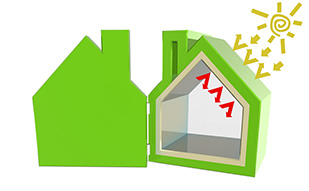Thermal insulation
SunForce™ contains air inside, which provides thermal insulation performance. The thermal insulation of the foam improves the thermal efficiency by preventing heat loss as well as preventing condensation on products by eliminating sudden temperature differences. It also reduces the influence that products may receive from high-temperature objects, heat sources, or low-temperature environments.

※Image is for illustration purposes
